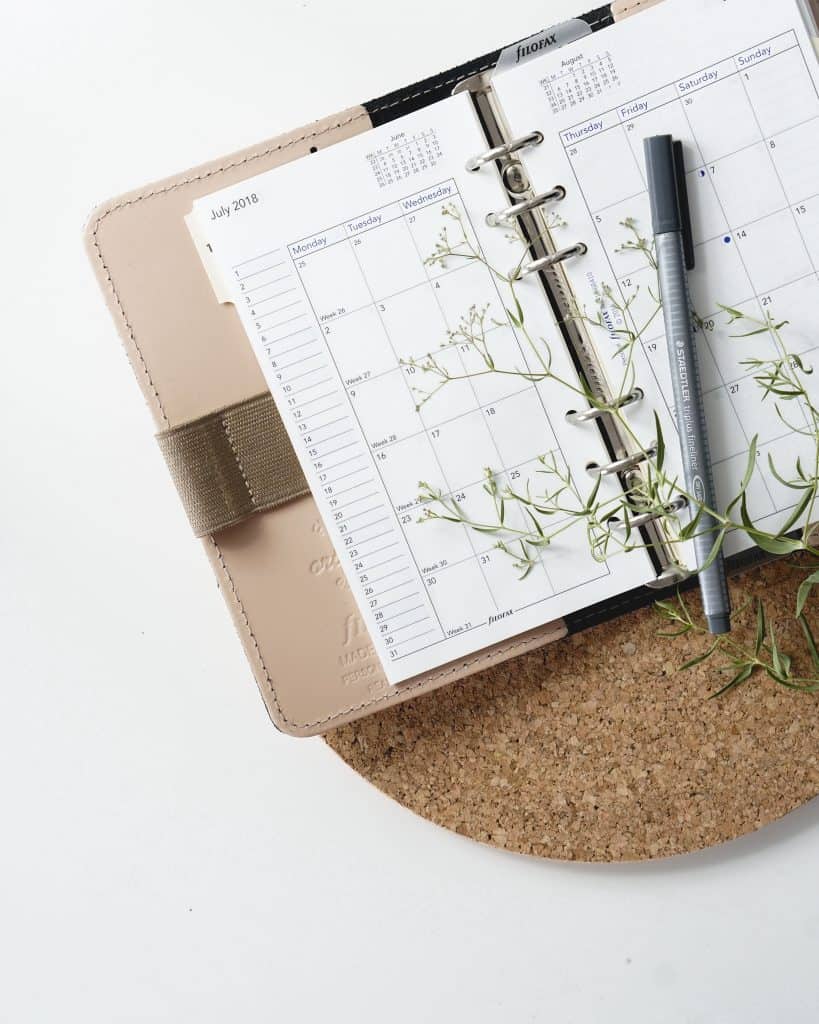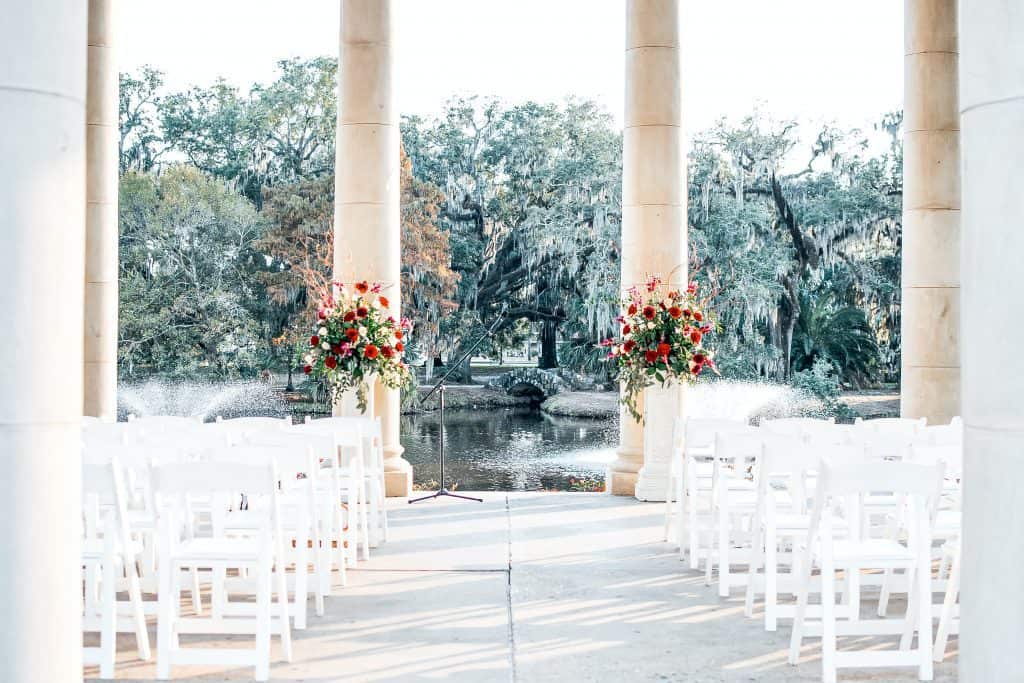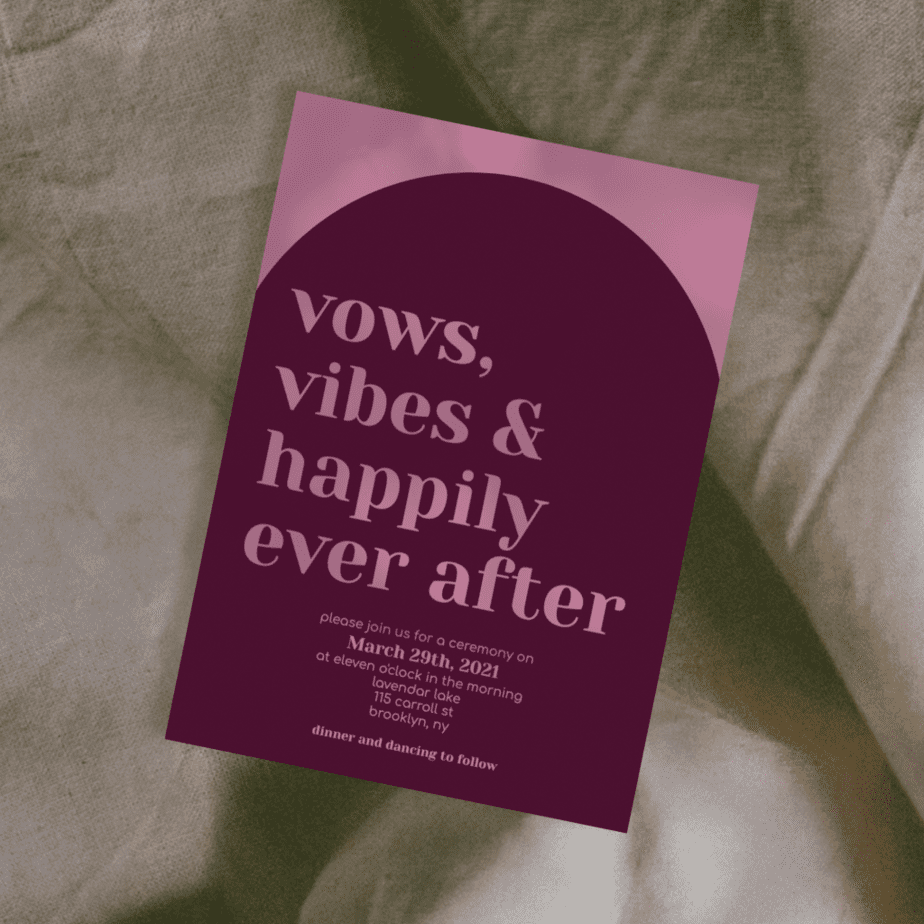
This post contains affiliate links and/or links to my own products. I never recommend anything I don’t love or wouldn’t use myself.
You’re engaged! Now what? It’s a common question for newly engaged couples – where to begin when wedding planning? If you’ve never planned an event before, it can be incredibly overwhelming. Maybe you have a few Pinterest boards set up with inspiration or maybe you’re starting completely from scratch. This article can help. I’m going to break down the first ten steps of wedding planning for you to get you started on the right path.
1. Where do I start?
To get started with wedding planning, the first thing after your engagement is to have a conversation with your partner about the kind of wedding you want. You want to get on the same page in terms of what you’re willing to spend and what your expectations are for the event.
This can be generally, you don’t need to get into specifics on napkin colors and whether your Great Aunt Sara should be invited. For some couples this is easy and you’re both on the same page about the type of wedding you want. For others, you may find there’s a big difference in your expectations.
Still lost?
Here’s a list of the types of weddings to bring to the conversation:
The table below shows the basic types of weddings with guest list numbers, budget estimates, and a link to articles we have on more details for each type:
| Wedding Type | Expected Guest Count | Budget |
| Elopement | Just the couple with maybe a witness or two | $ |
| Micro wedding | Under 50 | $ |
| Destination Wedding | Usually under 100 (can be more or less depending on the venue and budget) | $-$$$ |
| Traditional Local Wedding | 100-300 | $$-$$$ |
During this discussion you may discover you both want to elope! Or you may find out that your partner has always dreamed of a huge wedding in your home town catering hall, while you were kind of hoping for a more low key backyard wedding. Welcome to your first compromise as an almost married couple.
Often when there’s a discrepancy in vision, talking about numbers will help level set. A lot of people have no clue that the average wedding costs $30,000 for 100ish people. When you or your partner start to see those zeroes, you may decide you’d rather spend that kind of money on a downpayment for a house or a car instead. Or you may decide you have it within your own budget, or through family financial contributions, to afford it.
Speaking of contributions, if anyone else is helping you fund the wedding, you should involve them in this discussion too. It’s best to have a clear understanding of how much you can spend and what you’re spending it on upfront.
2. Identify your budget
Now that you’ve had some serious discussions, make your budget a firm number. Whether that’s $10,000 or $100,000. Put it into a spreadsheet and start figuring out where the money is going to come from.
You can check out my free budget guide if you sign up for my newsletter. It automatically calculates what you should spend where based on your budget and guest count and helps you stay on track. It’s like the fairy godmother of numbers.
Do not borrow any money for your wedding. A wedding is not an investment or asset that’s going to gain value. If you can’t afford the wedding you want right now, make a plan for how long it’s going to take to afford it and schedule your wedding for that date. Or have a smaller ceremony now and a bigger reception later.
3. Estimate your guest list
Third, start listing out people you want to invite. You should already have a sense from your earlier conversation what overall number you’re aiming for: small or large. It’s useful to start listing out some real names and starting a count for the approximate number of people.
What you’ll discover is who is on your ideal guest list and if that number is a lot larger or smaller than you were expecting. Don’t panic and start cutting people out just yet. Just get a number and see if that changes how big you want your wedding or if you’re willing to cut people to get to a number you feel more comfortable with.
Let’s talk about a real example. When my husband and I started planning our wedding, we knew we had big families and wanted a wedding of about 100 people. I added up my cousins, aunts, and uncles and that was over 50 people alone. Our estimated list was more like 200… We moved on to the next step and looked at venues. They had capacity for 150 that was within our budget so we changed our estimated guest count. We ended up inviting 175, knowing at least 25 people wouldn’t be able to make it based on the fact that it was out of town and normal drop off rates.
4. Create a list of no-go dates
Before you look at any venues, it’s a good idea to make a list of dates that absolutely won’t work for you or your close family members. Here’s a sample list of what makes a date a non-workable date:
- You or your partner have a previous commitment that can’t be rescheduled
- Your parents or siblings have a planned vacation
- Someone in your family or friend circle is having their wedding
- You are, or someone close to you is, having a baby (block off the entire last month of their due date and 3-6 months after the baby is due if you want them to attend)
- Holidays (optional, some people like a long weekend for their wedding but some of your guests will have plans)
If you don’t know the dates for some of the above but know they are happening, give that person or one of the people invited a call to ask about the date so you can block it off of your calendar.

5. Research and schedule your venue visits
Fourth, go look up some venues within your budget and schedule some tours. Some venues will list pricing on their websites and others won’t. Try not to look at anything outside of your budget. Wedding Wire is a great resource for budget estimates. Or you can call the venue and ask if something is within a certain range. Usually they will let you know over the phone since they don’t want to waste your time or theirs if it’s not a good fit.
Limit the number of venues you see to five. You don’t have to see five. I only saw two and was able to make my decision. But you really shouldn’t see more than five if you’re doing some research upfront. Seeing more than a handful will become overwhelming and make it harder for you to decide.
Pick a date, book the venue, place your deposit and then move on to step five.
6. Finalize your guest list and collect addresses
In step five, now that you’ve made some big decisions about your budget and venue, you’re ready to actually narrow down that guest list. Return to your original list and put it in priority order. If you’re having trouble, here’s a flow chart of who you should invite to your wedding.
7. Ask your wedding party to join you
Start by asking your maid of honor and best man first. Then ask the rest of your bridal party. That way if your pick is unable to make it, you can ask someone else. You already have your date so you’ll hopefully avoid inviting someone to be your maid of honor or best man who then can’t make it.
You can make this special with a gift or bridesmaid proposal box, or keep it simple with a phone call or planned lunch date. The proposal boxes have become trendy recently but are not at all necessary if you’d looking to save some money for other elements of your wedding.
8. Pick a theme
You might have a sense of what your theme is already after your initial discussions and venue selection. If not, now is a good time to solidify the theme, pick colors, and nail down what decor you’ll need. This will help make the rest of wedding planning smoother and easier to make decisions.
Stuck on how to decide? Here are some ideas that can help guide you to a wedding theme:
The venue
Let the venue be your guide. The place where you’re getting married or having the reception can be an excellent source of inspiration. If it’s an 18th century estate with a large lawn, you can choose complimentary colors to the landscape, use lawn games as your decor for the cocktail hour, and lean full into the garden-party theme with your dress, wedding party outfits, hair and makeup, invitations, etc. If you’re getting married in a Chicago Hotel then you wouldn’t have a garden party, you’d take inspiration from Art Deco and have a more formal affair.
Seasonality
Each season has it’s own considerations and color palettes that you can rely on to inform your wedding theme. Fall lends itself to burgundy, oranges and browns. And your day of attire might include a shawl or 3/4 sleeves. A winter wedding could be blue-toned or be inspired by a Christmasy red and green. Summer begs for pinks and greens. Spring is a pastel paradise.
Your favorite color
Or choose your favorite color as a base and complimentary colors around it, regardless of season. Then you might discover some themes that naturally fit around it. For example, if you love navy blue and red and you’re getting married by the sea, you could create a nautical theme.
Your favorite activity as a couple
You can be as loud or as subtle incorporating your favorite activity into your wedding as you’d like. For example, if you and your partner love doing the crossword, you could have a crossword-themed seating chart and place cards. Or you could lean full into a bookish theme for everything from the invitations, to a library venue, to your vows and favors.

9. Send save the dates / invitations
It’s time to make it real! You have a date, a theme, and your budget in good shape, which means you can plan your invitations. You might not be ready to send them out just yet depending on your timeline but you can decide what kind of invitations you’d like, book a stationery designer if you need one or pick a template on Etsy.
Generally, you want to send out your save the dates 9-12 months before your wedding (12-18 months if it’s a destination wedding). And wedding invitations 4 months before the wedding (6 months if it’s a destination.) Check out this article for why that timing is important and exactly when to send them depending on your wedding date. (Here if it’s a destination wedding.)
10. Buy your wedding dress
Buying your wedding dress comes so early on in the process because it can take a long time for your dress to be made and come in. Made to order dresses take 6-9 months or longer depending on the designer and time of year to come in and be altered after your place your order. Most wedding gowns you find at a bridal shop will be made to order.
You can shorten that timeline a little by buying something off the rack instead of made to order. But it’s still a good idea to book your appointment and try some dresses on. Or if you’re buying online to start looking and order some options to try on.
This will not only leave you with plenty of time for alterations, if needed. It will also account for any shipping delays or waiting for something you found in-store to be in-stock in your size.
Wedding Planning Part 2
There’s still a lot more to wedding planning but these ten first steps will get you started and on your way. We’re working on a part two that covers the remaining steps and will link to it here when it’s ready.
In the meantime, if you’re looking for a place to ask questions or get advice from other brides, you can check out our free, private Facebook group – Bold on a Budget Weddings.
